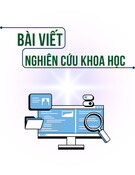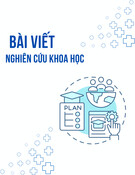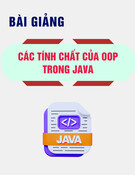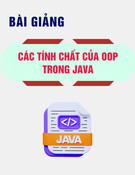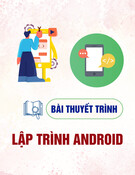
TNU Journal of Science and Technology
229(12): 116 - 123
http://jst.tnu.edu.vn 116 Email: jst@tnu.edu.vn
A STUDY ON EFFECIENCY OF TEACHING PROBABILITY AND STATISTICS
COMBINING WITH PROGRAMMING LANGUAGE R FOR STUDENTS IN
UNIVERSITY OF INFORMATION AND COMMUNICATION TECHNOLOGY,
THAI NGUYEN UNIVERSITY
Quach Thi Mai Lien*
TNU - University of Information and Communication Technology
ARTICLE INFO
ABSTRACT
Received:
02/5/2024
This study investigates the impact of teaching methodologies with
probabilistic programming language R on student performance across various
topics in probability theory and statistics. Integrative teaching strategies has
shown impressive efficiency in enhancing student’s critical thinking skills,
creativity, and ability to solve complex problems. Here, two distinct groups of
students, one (group B) have been taught these topics with traditional
methodology and the other (group A) have been taught with R, were exposed
to different instructional approaches. The performance of 1000 students from
each group in University of Information and Communication Technology –
Thai Nguyen University, was evaluated across Bloom's Taxonomy 6 levels,
encompassing fundamental to advanced cognitive skills. Employing statistical
analyses such as statistical descriptions, MANOVA and machine learning
classification, we compared the performance of the two groups and conducted
post-hoc analyses to identify specific factors contributing to performance
disparities. Results indicate the superior performance of group A across
multiple cognitive levels, underscoring the efficacy of methodology A. This
research contributes to the ongoing discourse on optimizing teaching
methodologies to enhance student learning outcomes in probability and
statistics. Especially, it encourages to combine the teaching methodology of
these subjects with a probabilistic programming language, such as R.
Revised:
08/8/2024
Published:
08/8/2024
KEYWORDS
Teaching methodology
Teaching probability and
statistics
Programming language
Probabilistic software
Integrative teaching
MỘT NGHIÊN CỨU VỀ SỰ HIỆU QUẢ CỦA VIỆC DẠY HỌC XÁC SUẤT VÀ
THỐNG KÊ KẾT HỢP VỚI NGÔN NGỮ LẬP TRÌNH R CHO SINH VIÊN
TRƯỜNG ĐẠI HỌC CÔNG NGHỆ THÔNG TIN VÀ TRUYỀN THÔNG,
ĐẠI HỌC THÁI NGUYÊN
Quách Thị Mai Liên
Trường Đại học Công nghệ thông tin và Truyền thông - ĐH Thái Nguyên
THÔNG TIN BÀI BÁO
TÓM TẮT
Ngày nhận bài:
02/5/2024
Nghiên cứu xem xét hiệu quả của việc giảng dạy tích hợp môn học xác suất
thống kê với ngôn ngữ lập trình R. Dạy học tích hợp đang cho thấy hiệu quả ấn
tượng trong việc củng cố kỹ năng tư duy phê bình, khả năng sáng tạo, kỹ năng
giải quyết vấn đề của người học. Hai nhóm sinh viên được xem xét, một nhóm
(nhóm B) được dạy các chủ đề này bằng phương pháp truyền thống và nhóm còn
lại (nhóm A) được dạy các chủ đề này kết hợp với ngôn ngữ R. Kết quả học tập
của 1000 sinh viên từ mỗi nhóm tại trường ĐH Công nghệ Thông tin và Truyền
thông – ĐH Thái Nguyên được đánh giá theo thang đo 6 bậc Bloom, gồm các kỹ
năng nhận thức cơ bản đến nâng cao. Sử dụng các phân tích thống kê mô tả, cũng
như MANOVA và các phương pháp phân loại học máy, nghiên cứu đưa ra so
sánh sự hiệu quả của các phương pháp dạy học trên hai nhóm sinh viên và tiến
hành phân tích hậu kiểm để xác định các yếu tố cụ thể góp phần tạo ra sự chênh
lệch về sự hiệu quả của mỗi phương pháp. Kết quả cho thấy hiệu quả vượt trội
của nhóm A trên nhiều cấp độ nhận thức. Nghiên cứu này giúp khuyến khích
giảng dạy tích hợp môn học xác suất thống kê với ngôn ngữ lập trình như R.
Ngày hoàn thiện:
08/8/2024
Ngày đăng:
08/8/2024
TỪ KHÓA
Phương pháp giảng dạy
Giảng dạy Xác suất và Thống kê
Ngôn ngữ lập trình
Phần mềm xác suất
Dạy học tích hợp
DOI: https://doi.org/10.34238/tnu-jst.10256
*Email: qtmlien@ictu.edu.vn







